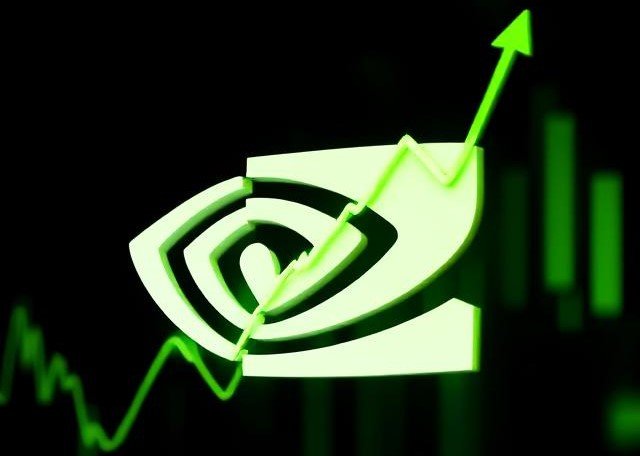In an unprecedented turn of events, Nvidia has officially crossed the $4 trillion market capitalization milestone, becoming the first publicly traded company to do so. While headlines celebrate this achievement with awe, many in the tech and financial sectors are left scratching their heads, wondering: Is this valuation real, or is the math broken?
Let’s unpack what’s really going on.
The $4 Trillion Milestone: How We Got Here?
It wasn’t always this way. Nvidia started as a gaming chip company, making sure your Call of Duty sessions ran smoothly. But their pivot to AI and data centers? Pure genius. Fast forward to 2024-2025, and Nvidia’s dominance in the AI hardware space has made it the de facto engine room of the artificial intelligence boom. Their CUDA platform, H100 and Blackwell chips became the gold standard for AI training, and now they’re basically the picks-and-shovels of the AI gold rush. Add to that their knack for staying ahead of competitors like AMD and Intel, help them being at the top of the table.
With tech giants like Microsoft, Google, Amazon, and Meta racing to build AI infrastructure, Nvidia has found itself in a golden spot. Demand for its GPUs has skyrocketed, and so has its revenue – leading to an explosion in stock value.
Here’s a quick timeline of Nvidia’s rise:
- 2020: $300 billion valuation
- 2023: Crossed $1 trillion
- 2024: AI boom fuels massive demand
- 2025: Hits $4 trillion
The AI Rocket Fuel
Nvidia didn’t just stumble into this. They’re riding the AI wave like nobody’s business. Their GPUs (those fancy chips that power everything from gaming to AI models) are the backbone of the generative AI boom. Think ChatGPT, self-driving cars, and every sci-fi-sounding tech in between—Nvidia’s tech is at the heart of it. Companies like OpenAI and Tesla are snapping up Nvidia’s chips faster than you can say “machine learning,” and that demand is sending their stock into the stratosphere.
AI Mania or Market Madness?
Investors are pouring money into anything that even whispers the letters “A” and “I”. Nvidia’s chips are literally powering the AI revolution, but the company’s price-to-earnings (P/E) ratio and forward expectations have gone into nosebleed territory.
At $4 trillion, Nvidia is now worth more than:
- The entire German stock market
- Amazon + Tesla combined
- And nearly the same as the GDP of Japan
This has led some analysts to ask: Is this still investing, or have we entered a new form of speculative math driven by AI FOMO?
Where the Math Feels “Broken”?
A $4 trillion valuation sounds like something out of a futuristic movie, right? To put it in perspective, that’s more than the GDP of most countries. It’s not just big – it’s mind-bogglingly big. Nvidia’s stock has been on a tear, climbing over 180% in the past year alone (Crazy, huh?). Why? Because the world’s betting on AI, and Nvidia’s the one holding the keys to the kingdom. Investors are throwing money at them like they’re printing it, and the numbers just keep defying gravity.
Here’s where things get strange.
- Revenue vs. Valuation: Nvidia’s revenue may be booming, but it’s not growing that fast. Its valuation has outpaced its earnings at an unsustainable rate.
- Supply Chain Limits: Nvidia physically cannot manufacture enough GPUs to meet current demand – which should naturally cap growth in the short term.
- AI Overhype: Just like the dot-com bubble, there’s a fear that everyone is pricing in a sci-fi level future that may never fully materialize.
Hitting $4 trillion is a flex, but it’s not the endgame. Nvidia’s betting big on expanding AI applications – think healthcare, robotics, and even the metaverse. But with great power comes great pressure. Can they keep innovating? Will the AI bubble burst? And what happens if regulators or supply chain hiccups throw a wrench in the works? For now, Nvidia’s riding high, but the tech world moves fast.
Why This Matters to You
Even if you’re not an investor, Nvidia’s rise affects us all. AI’s changing how we work, play, and live, and Nvidia’s at the center of it. From smarter virtual assistants to breakthroughs in medicine, their tech is shaping the future. Plus, it’s a reminder that in today’s world, a company selling chips can outvalue entire industries. Math might feel broken, but Nvidia’s proving it’s just getting started.
Math Isn’t Exactly Broken — But It’s Definitely Bent
Nvidia’s $4 trillion crown is both a reflection of extraordinary innovation and a warning sign that speculation may be outpacing reality. Whether this moment becomes a historic milestone or a cautionary tale depends on what comes next.
For now, the market says Nvidia is worth $4 trillion. But when everyone believes the hype, the real question becomes:
Who’s doing the math — and who’s checking it?
Discover more from VLSIFacts
Subscribe to get the latest posts sent to your email.
